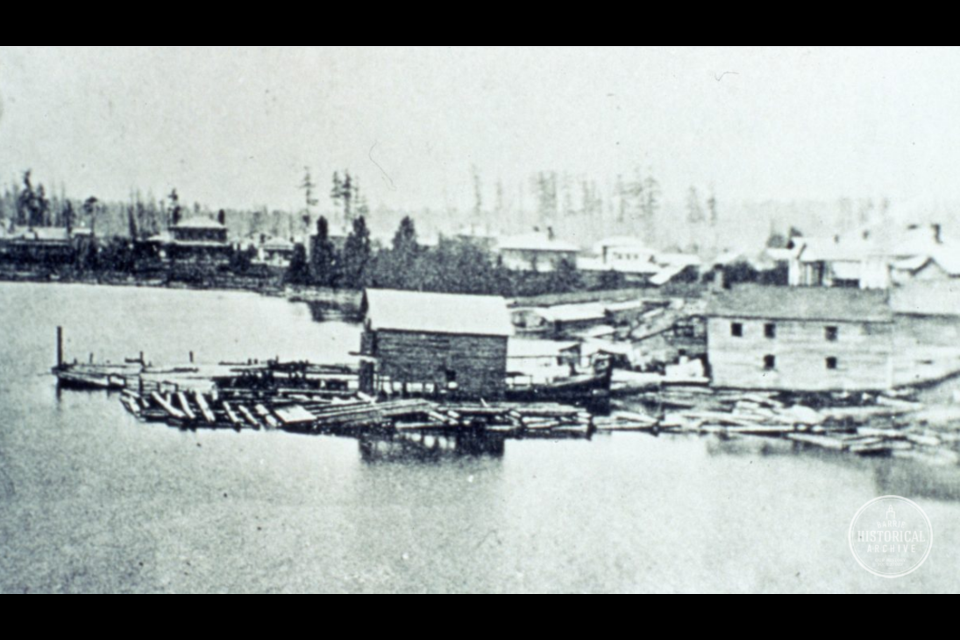“Many and varied are the tales of travel in the early days of this district but it is doubtful that anyone ever set a record like Eli ‘Deerfoot’ Corbiere, the first man to carry His Majesty’s Mails, who on one occasion ran the 60 miles of his route between sunup and sundown in a single day.”
Whether partly legend or not, this quote from the Centennial Edition of the Barrie Examiner of July 31, 1953, gives a window into the dedication and stamina of a man with what must have been a very difficult job.
In these early days, pre-1840, Barrie was barely Barrie. No actual post office yet existed, but communication with the outside world was necessary.
Eli Corbiere came from the hardiest of family trees. His father, Louis Corbiere, had been a voyageur with many storied travels of his own, while his mother’s ancestors were strong Indigenous People with deep connections to the land surrounding the Great Lakes.
By the end of the American Revolution, Mackinac Island, in Lake Huron, had been a hub of French trade for a century, and a sacred place to the Anishinaabe for hundreds of years before that. In the late-1700s, the British, who had taken control of the island and built a fort, ceded Mackinac to America and removed to nearby St. Joseph Island.
A group of British soldiers and French voyageurs banded together to retake the island a few years later and Mackinac became a strategic outpost during the War of 1812.
When the dust settled after that war, Mackinac Island again went back into American hands, through treaty, and the British had to relocate to Drummond Island. Most of the voyageurs chose to follow the British.
The final move came in 1828 when the water borders between British Canada and America were again adjusted and the occupants were given orders to relocate.
In November 1828, the 68th Regiment travelled to the naval station at Penetanguishene. With them, came some 75 voyageur families and numerous Indigenous people who had in many cases formed family relationships with the Europeans. Most new arrivals were given lots by the Crown to make up for their homes and lands that had been left behind.
Among these migrants were the Corbieres. Eli Corbiere was born about 1818, although dates vary wildly, somewhere near Penetanguishene. He started out as a shoemaker which necessitated travel to Barrie where an early leather tannery had been built and caused him to visit Holland Landing in the course of his trade.
Corbiere was already well acquainted with the rough and swampy trail through the bush from Holland Landing to Barrie when the call went out for courier to transport His Majesty’s Mail along what would eventually become Yonge Street. Young, fit and fast Eli Corbiere signed up!
Within a short time, other frontier communities requested Cobiere’s services and his 30-mile route suddenly doubled. He walked, ran and perhaps swam through harrowing conditions in dense forest, alone but for the many wild animals.
It was one particular expedition that landed Eli Corbiere in the history books. For some unknown reason, Corbiere once sprinted the entire route in a day, while either acquiring or confirming the nickname of Deerfoot and collapsed after dropping his leather satchel at the end of the run.
Andrew Hunter, in his 1909 book A History of Simcoe County, quoted Judge Boys who, in the language of the day, had described the beginnings of mail service to Barrie at the 1884 laying of the Post Office cornerstone.
“In the early days there used to be no regular post office nearer than Penetanguishene to the north and Holland Landing to the south. Between these two offices, a mail carrier passed on foot once a week and was afterwards allowed to drop and take up a mailbag on his journey to and fro Barrie. This carrier was a half breed and some idea of his labours and endurance may be formed from the fact that he sometimes left Penetanguishene in the morning and reached here at night and at once left here continuing his journey to Holland Landing.”
Eli Corbiere eventually settled in Newmarket and delighted in telling tales of his mail runner exploits to his son, Charlie. Eli Corbiere passed away in June 1910 at age 91 years. His death registration lists his occupation simply as shoemaker, but he was much more than that.
Each week, the Barrie Historical Archive provides BarrieToday readers with a glimpse of the city’s past. This unique column features photos and stories from years gone by and is sure to appeal to the historian in each of us.



